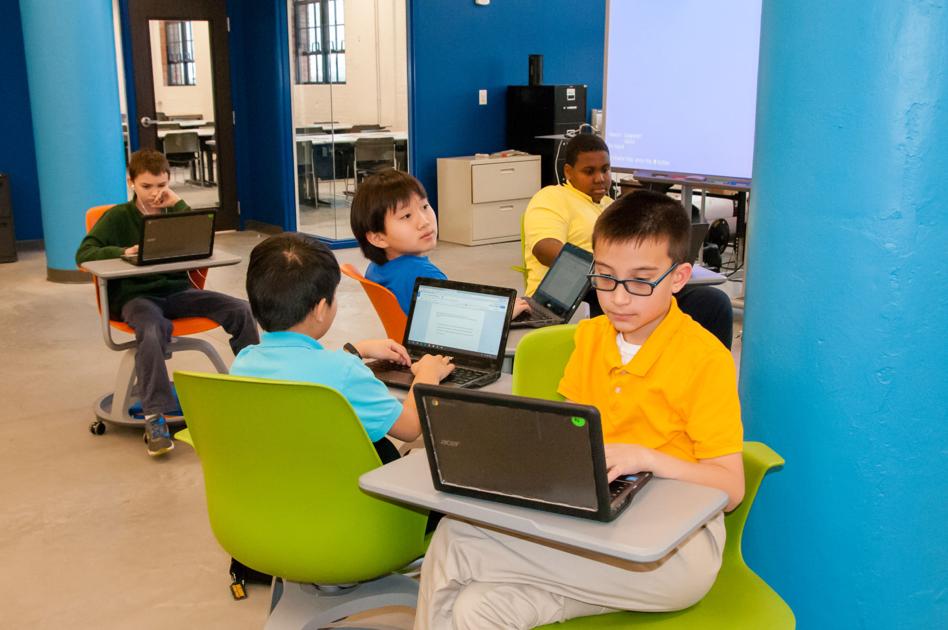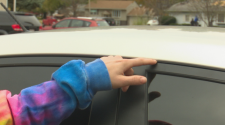As the preteen generation has grown up with technology at every turn, schools are finding ways to incorporate technology into the classroom.
According to Teri Harrison, chairperson, and Eamon O’Donnell, middle school technology teacher, both at Menlo Park Academy in Cleveland; and Lisa Ulery, director of technology and library services at University School in Shaker Heights, technology provides an opportunity to customize learning.
“As a cohort, middle school students are the most entrenched in technology,” Ulery stated. “It gives them a different concept of what technology can do. They tend to see it as an entertaining diversion. But middle schoolers are beginning to understand that they can use it in an educational sense. There are a lot of different ways that this age range can learn.”
Especially for “gifted students,” meaning students who show accelerated performance skills beyond their grade, Harrison said technology enables education to differentiate lessons when a student is ready to move on.
“A seventh grader who is taking a pre-calculus course will likely be using an online tool with teacher support,” she said. “This sort of melding allows us to offer a class like that to just one student.”
Technology poses pros and cons for classroom learning.
“Tech is a ‘Catch-22,’” O’Donnell noted. “For many students, technology is a way for them to dive deeper into subject areas or review material that has already been discussed in the class. Notes can be found online and everything is neatly stored in a single location. It’s a wonderful thing for many of our kids, especially for students who move at a faster pace than their classmates.”
Harrison added, “Technology forces us to question a lot of things in education. Is there still a reason to teach cursive writing when so much of the work students do is on the computer? Should we still memorize state capitals when finding out the answer is a simple question typed on Google? When we were growing up, it was a trip to the library.”
But, technology has also made learning easier in many ways.
“It has helped learning become faster and in more real-time,” Ulery explained. “We have kids who are researching coral reefs, and they can get in touch with experts in the field pretty quickly. When I was in school, it wasn’t really like that. It’s about getting those onsite and in-depth learning experiences.”
O’Donnell said technology has also changed the way teachers teach.
“Before, a great deal of time was spent introducing ideas and concepts,” he said. “Today, we can ‘flip’ our classroom and assign a quick five-minute video for homework the night before. This allows the teachers to spend more time reviewing with students who need extra assistance while allowing the students who comprehend the material to dive deeper into the topic on their own. It allows class time to be utilized more efficiently.”
Both Ulery and O’Donnell said student retention also rises with the use of technology.
“It’s really interesting because, again, when I was in school, it was a lot of taking notes, listening to lectures and reading,” Ulery recalled. “But now, kids have the opportunity to interact with course material through different mediums. This helps them become engaged with the material.”
O’Donnell added, “Technology allows all information students need to learn to be kept in one location. (At Menlo), we use Google Classroom. It allows us to post homework, make classroom updates, post notes, video links and other necessary teaching items.”
As for the future of learning, technology plays a meaningful role.
“Every job in the future will involve computers in some way,” Harrison said. “In my opinion, we should be teaching kids to code as if it were a second language.”
O’Donnell added, “We are preparing students today for jobs that currently do not exist. We need to stay on top of those technology changes and adapt our lessons so that students are obtaining ‘real-life skills’ and are prepared for the jobs of tomorrow. If not, we are only doing them a disservice.”
Ulery said the next step in technology-integrated learning is further personalization.
“The personal experience with technology is something that is going to be even more impactful as education evolves,” she said. “These kinds of things will become so exciting as they become more reliable and robust.”













Republicans Could Lead on Mental Health Treatment